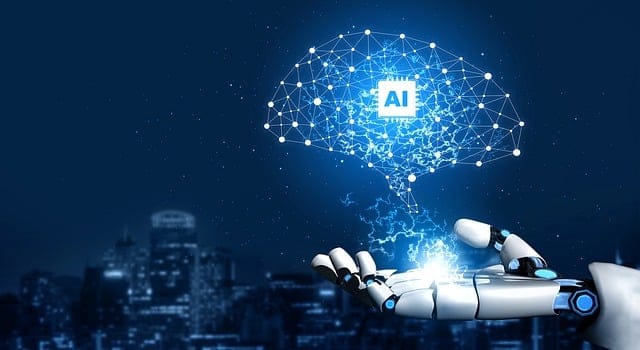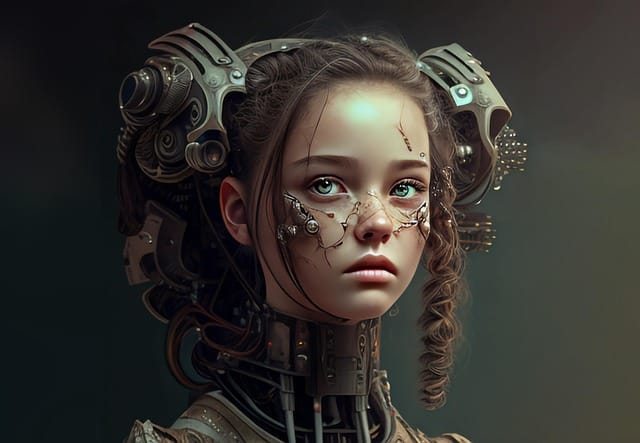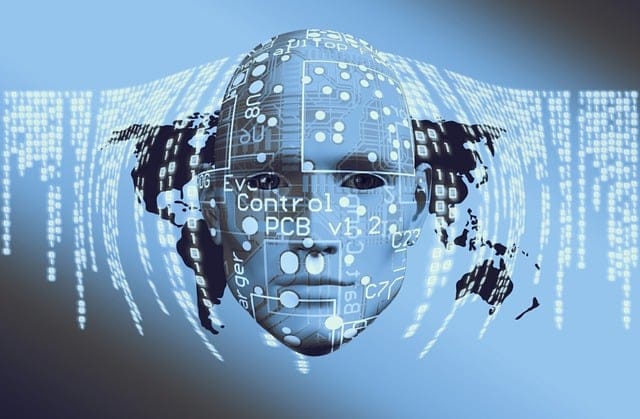So, what’s the opportunity? AI can automate tedious tasks like grading and managing schedules, giving teachers more time to focus on what they do best—teaching and inspiring students. Picture a teacher freed from the burden of paperwork, able to spend more time engaging with students, fostering creativity, and nurturing critical thinking. That’s the power of AI!
But hold on; it’s not all rainbows and butterflies. With great power comes great responsibility. The challenges of incorporating AI in education can be daunting. For starters, there’s the issue of accessibility. Not every student has a shiny laptop or high-speed internet at home, which means AI could inadvertently widen the gap between those who have and those who don’t. Just imagine a world where some students are racing ahead with personalized AI tutors while others are left staring at the classroom door, yearning for the same opportunities.
Then there’s the concern about data privacy. In a world where every click and interaction is analyzed, how do we keep student information safe? It’s like handing your personal diary to a stranger and hoping for the best. Teachers and schools must navigate these waters carefully.
Balancing the scales between opportunity and challenge is tricky, but one thing is for sure: the impact of AI on education is like a double-edged sword. It promises a world of tailored learning while also inviting a slew of questions about ethics and equality. The key lies in harnessing its potential responsibly and creatively!
Revolutionizing Learning: How AI is Transforming Education in the 21st Century
Picture this: you’re struggling with algebra and your teacher is swamped with other students, leaving you lost in the numbers. Now, imagine an intelligent tutoring system that swoops in, analyzing your unique learning pace and style. It not only helps you grasp those tricky equations but does so at your rhythm. AI makes this possible by harnessing big data and machine learning algorithms, continuously adapting to your needs. It’s like having a personal coach cheering you on, but in digital form!
Now, let’s talk about accessibility. What about students in remote areas who don’t have access to quality education? AI makes it easier to bridge that gap. With online resources, smart apps, and even virtual classrooms powered by AI, learning becomes universal, breaking down geographical barriers. It’s like having a global classroom right in your pocket!

And don’t forget the teachers! With AI handling the administrative tasks—like grading and lesson planning—educators can devote more time to what really matters: inspiring students. It’s akin to giving teachers a superpower, allowing them to focus on creative teaching methods that engage and motivate.
AI in education isn’t just about tech; it’s about transforming learning into a personalized, interactive experience. It’s shaping a future where every student gets the chance to unlock their potential. Isn’t that something worth dreaming about?
The Double-Edged Sword: Exploring the Opportunities and Challenges of AI in Classrooms
But hold on, because that’s just one slice of the sword. The integration of AI in education can also raise eyebrows and spark debates. What about data privacy? As AI systems gather data to customize lessons, there’s a valid concern about how student information is stored and used. It’s like handing someone the keys to your house—trusting they’ll only use them for good.
Moreover, while AI can help teachers with administrative tasks, allowing them more time to connect with students, there’s a fear that it might eclipse the human touch essential for teaching. You truly can’t replace the spark of inspiration that comes from a passionate educator. It’s one thing to have a machine grading tests and quite another to have a teacher who understands the nuances of learning and fosters creativity and critical thinking.

So, while AI promises a smarter, more efficient classroom experience, we must tread cautiously. It’s a balance of embracing these cutting-edge innovations and ensuring that the heart of education—the connection between teacher and student—remains intact. Can we navigate this dynamic landscape without losing what makes learning truly valuable?
Artificial Intelligence in Education: Unlocking Personalized Learning While Navigating Ethical Dilemmas
But hold on—while the benefits of AI are dazzling, they come with a side of ethical dilemmas that shouldn’t be ignored. For instance, how do we ensure that all students, regardless of their background, have equal access to these advanced tools? Just like not everyone can afford a top-notch gym membership, we need to be mindful of the digital divide that could leave some students in the dark while others thrive.

Additionally, there’s the concern about data privacy. Think about it: AI systems collect a mountain of data to tailor learning experiences. But who’s watching over that data? It’s like a double-edged sword; the same technology that personalizes learning could easily become a surveillance tool if not handled responsibly.
Furthermore, there’s the question of teacher roles. Are we at risk of diminishing the human connection that’s vital in education? Teachers aren’t just dispensers of knowledge; they’re mentors, motivators, and role models. If AI starts doing all the heavy lifting, where does that leave the vital human touch in learning?
Navigating these ethical waters might feel like walking a tightrope, but it’s a journey worth exploring. As AI reshapes education, we have the chance to create a system that truly meets the needs of every learner—while also ensuring that fairness and human connection take center stage.
From Tutoring Bots to Grading Algorithms: The Role of AI in Shaping Future Education
AI is like that super-smart friend who always has the right answer—and what’s cool is that it never gets tired. These tutoring bots harness the power of machine learning to personalize learning experiences for each student. They analyze your progress and adapt lessons based on what you need most. This means if you’re struggling with algebra, the bot will provide extra practice and tips until you ace it. It’s like having a study buddy who knows exactly what you need to succeed.
Now, let’s talk grading algorithms. Remember the days of waiting anxiously for your teacher to return tests? With AI grading, those heart-pounding moments could become a thing of the past. These algorithms can evaluate assignments in the blink of an eye, providing instant feedback. Not only does this save teachers time, but it also helps students understand their mistakes on the spot. Imagine being able to fix those errors immediately rather than waiting days to know how you did. How much more effective could your learning be?
And it doesn’t stop there! AI tools can identify trends in student performance, helping educators refine their teaching methods. Think of it like using GPS for navigation—AI tracks the best route for success, adjusting as needed to ensure no student gets left behind. With the tech-savvy future ahead, education is evolving into a more personalized, engaging, and efficient experience for everyone involved. Isn’t that exciting?
Frequently Asked Questions
What Ethical Considerations Should Be Addressed with AI in Education?
When integrating AI in education, it’s essential to address ethical considerations such as data privacy, bias in algorithms, transparency in decision-making processes, and the potential impact on student learning. Ensuring equitable access to AI tools and safeguarding against misuse is crucial for fostering a responsible educational environment.
How is AI Transforming Teaching and Learning?
Artificial intelligence is revolutionizing education by personalizing learning experiences, automating administrative tasks, and providing real-time feedback. It enables adaptive learning technologies that tailor content to individual student needs, enhances engagement through interactive tools, and facilitates data-driven decision-making for educators. This transformation aims to improve learning outcomes and efficiency in educational environments.
How Can Educators Effectively Integrate AI Tools?
Educators can effectively integrate AI tools by identifying specific learning objectives, choosing appropriate AI applications that align with these goals, and facilitating training sessions for both teachers and students. Regular evaluation and feedback mechanisms should be established to assess the impact of these tools on learning outcomes, ensuring adaptability and continuous improvement.
What Challenges Does AI Introduce in Educational Settings?
The integration of artificial intelligence in educational environments presents several challenges, including issues of data privacy, the need for teacher training, potential bias in AI algorithms, and the risk of dehumanizing student interactions. Additionally, there are concerns about the reliance on technology that may widen the digital divide and the necessity of ensuring equitable access to AI tools for all students.
What Are the Benefits of AI in Education?
AI enhances education by providing personalized learning experiences, automating administrative tasks, and offering data-driven insights to improve teaching methods. It enables adaptive learning tools that cater to individual student needs, facilitates access to educational resources, and promotes efficient communication between students and educators.







